Pondcast 28: Shutterbugs invade Black Pond
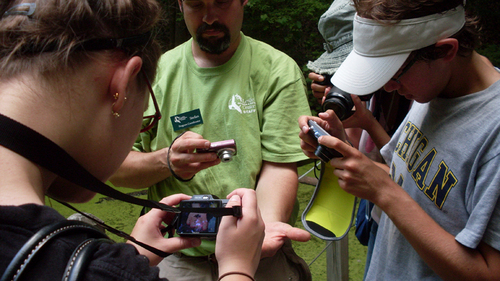
Shutterbugs at Black Pond on July 11.
Photo by Mandy Getschman
It was a grand and glorious day for a trip to Black Pond on July 11. I was joined by a number of shutterbugs (Homo sapiens photographicans) who participated in the Leslie Science and Nature Center’s Photo Safari program. In attendance were several children accompanied by parents as well as a few members of the Schoolcraft College Photography Club. Cameras of all makes and models contentedly clicked pictures of organisms found above and below the duckweed-covered waters of the pond.
The pond was still filled with thousands of flatworms (possibly nematodes), which appeared with every scoop of a net. Large aquatic snails floated amid the duckweed on top of the water. Daphnia (water fleas) were also present.
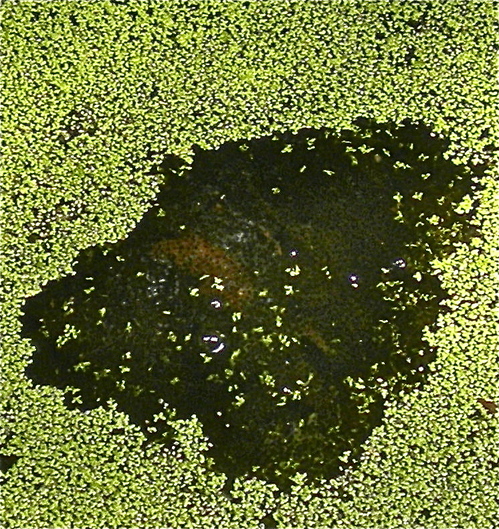
A cluster of green frog eggs at Black Pond on July 11.
Stefan Szumko | Contributor
Several clusters of green frog eggs were visibly floating in the pond, for they had recently been laid. About the diameter of a basketball, these clusters contain 3-5,000 eggs each. It’s amazing to think that a single female green frog laid each cluster. Within a day or two, these eggs would settle onto the vegetation below the water and then hatch into tiny tadpoles. One study I recently read suggested that green frog eggs that hatched after July 10 would most likely overwinter in the pond and mature in the next summer or two, depending on how wet 2011 will be. Male green frogs were still calling and the mating continued.
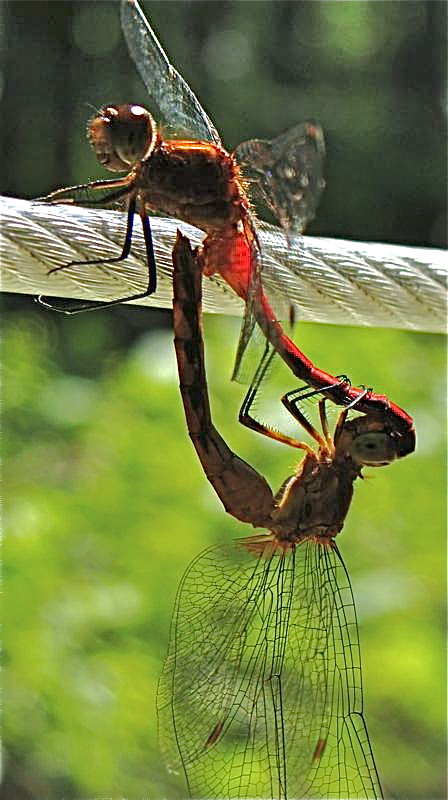
Red dragonflies, known as meadowhawks, mating. The male is above.
Photo by Kirsten Wood
Much to the delight of our young adult photographers, a pair of red dragonflies was observed mating in flight and as they rested on the safety cable on the edge of the floating boardwalk. The best identification for these aerial acrobats is that of the species known as the meadowhawk or fieldhawk (Sympetrum vicinum). Until they have the opportunity to mate with a few weeks of maturity, these dragonflies hunt smaller insects by laying in wait. Once the smaller insect takes flight, it is spotted by the dragonfly with its large eyes and is captured in flight. Dragonflies rarely miss their prey.
Basking in the sun on a log in the middle of the pond was a turtle. Most likely it was a painted turtle (Chrysemys picta), the State Reptile of Michigan. These turtles will live up to 40 years. So it is possible that this one has visited Black Pond in the past and may do so in the future. As they grow older, painted turtles develop a taste for plants but will continue to eat any small animal they can catch in the water. Their tongue is not free moving, so they must usually swallow their food while swimming. If you’re a tadpole in Black Pond, please watch out for this denizen.
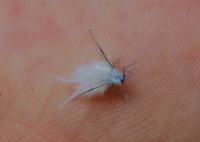
A wooly aphid rests on a human hand.
Photo by Kirsten Wood
July 11 marked the appearance of small, fuzzy, white flying insects. These creatures were probably wooly aphids of the Aphididae subfamily Eriosomatinae. These insects suck fluids out of all parts of plants and are a pest to fruit growers.
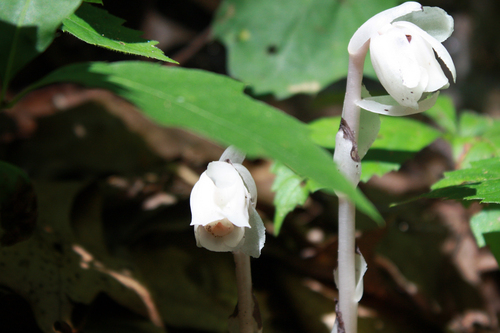
Monotropa uniflora, known as “Ghost Plant”, “Corpse Plant”, or “Indian Pipe”.
Photo by Anita Mishra
Blooming at one point along the trail to Black Pond, the unusual plant, Monotropa uniflora, known as “Ghost Plant”, “Corpse Plant”, or “Indian Pipe”. This species of Monotropa is all white, grows to be about 6 inches tall in small clusters in random locations throughout the woods, and does resemble an overturned tobacco pipe. Since it lacks the green chemical chlorophyll, Monotropa does not produce its own food. Instead, this plant obtains nutrients from an underground fungus that obtains nutrients from tree roots.
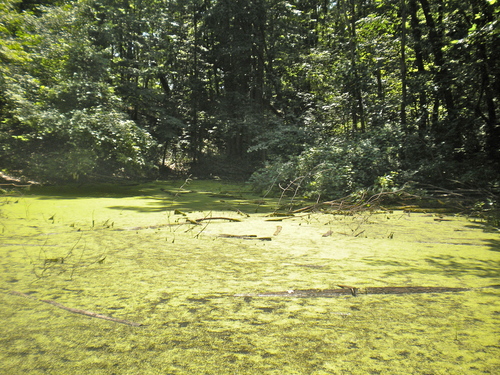
Black Pond on July 11.
Stefan Szumko | Contributor
You can see all the Pondcast videos by visiting the YouTube channel of Stefan Szumko, AKA slugwhisperer at http://www.youtube.com/user/slugwhisperer.
Stefan Szumko is a middle school science teacher by trade, an outdoor environmental educator by calling, and a homedaddy by choice. He can be reached at slugwhisperer@gmail.com.

